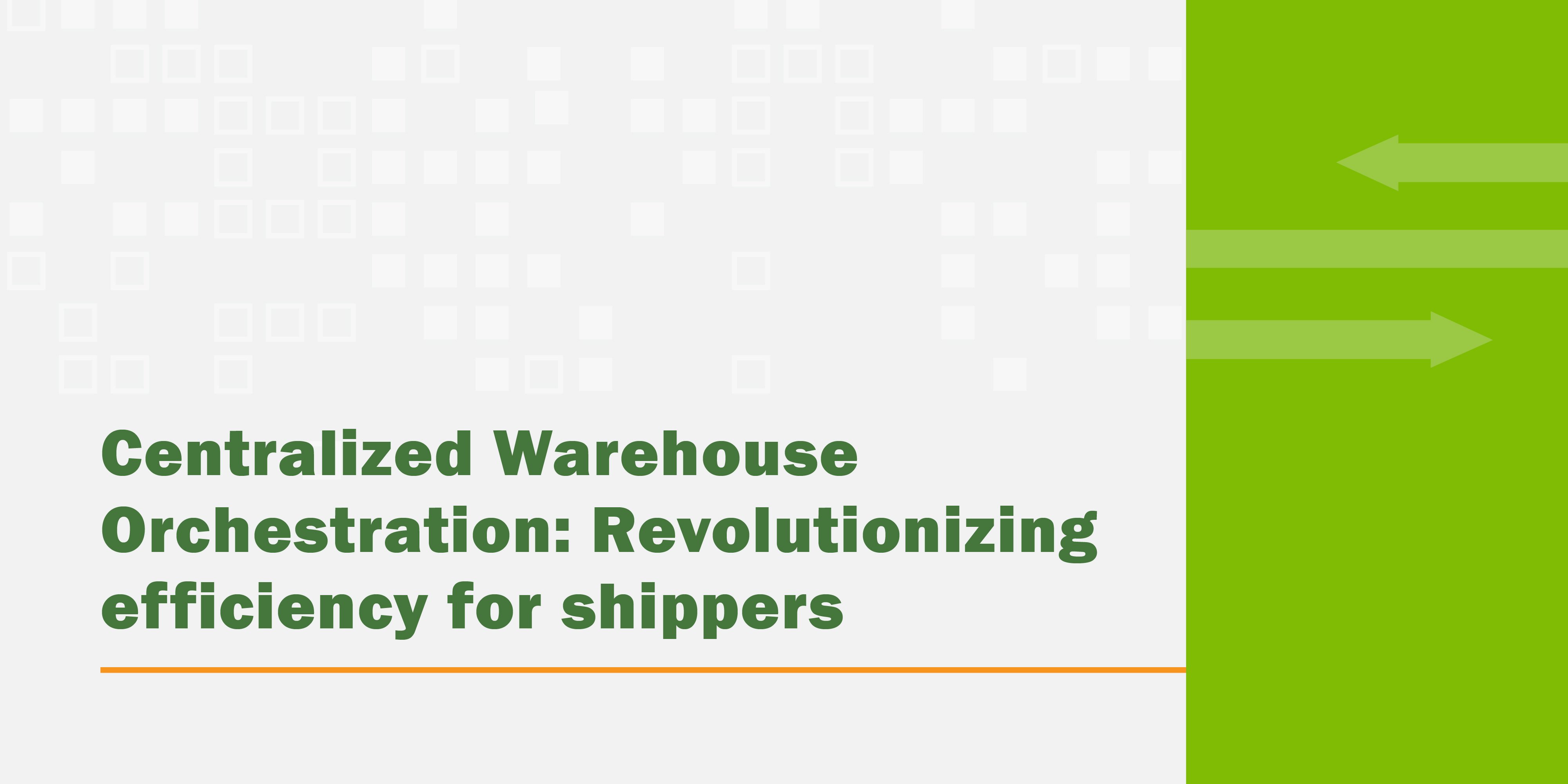Centralized Warehouse Orchestration: Revolutionizing efficiency for shippers
By Michael Perdue - AutoScheduler.AI Solutions Engineer
The distribution process is burdened with consumer expectations demanding faster deliveries, warehouse labor shortages, scarcity of physical storage space, and siloed supply chain data. Companies are taxed to improve distribution and warehouse processes to improve customer satisfaction, lower costs, and increase productivity.
Artificial Intelligence (AI) and Machine Learning (ML) have emerged as transformative technologies within the supply chain, including in the warehouse. AI-powered solutions enhance warehouse operations and improve efficiencies. AI can sit on top of a warehouse management system (WMS) to dynamically orchestrate all activities within the warehouse to make the WMS more responsive.
By integrating various aspects of warehouse operations through centralized warehouse orchestration, companies drive value by gaining efficiencies, reducing costs, and enhancing service levels.
A centralized warehouse orchestration solution uses advanced technologies, such as artificial intelligence, analytics, and machine learning, to manage and optimize warehouse processes. In other words, it acts as the brain of warehouse operations, coordinating activities, optimizing processes, and ensuring seamless integration of all supply chain components.
For multi-site operations, warehouse executives gain a bird’s eye view of what is happening at each site. A centralized warehouse orchestration system creates a comprehensive view of the entire distributed warehouse network, allowing executives to identify potential flow issues, which customers/shipments are at risk, and where action needs to be taken to avoid a service disruption.
Benefits for Shippers
A centralized warehouse orchestration platform enhances shippers’ operational capabilities, helping them gain a competitive edge. These benefits include:
- Increased Efficiency: Centralized orchestration streamlines warehouse operations, reducing manual labor and minimizing errors. This leads to faster and more accurate order fulfillment and better resource utilization.
- Cost Reduction: By optimizing inventory levels, automating processes, and making more efficient use of resources, shippers can reduce costs and waste.
- Improved Visibility and Control: Centralized warehouse orchestration systems give shippers real-time visibility into their warehouse network, allowing faster shipment tracking, proactive issue management, and more informed decision-making.
- Enhanced Customer Satisfaction: Customers get their orders at the right time and in the right amount by improving on-time, in-full fulfillment. This improves customer satisfaction, increasing customer loyalty and a competitive edge.
- Better Risk Management: Real-time data and analytics enable shippers to identify and mitigate risks more effectively. Managers can identify bottlenecks within the supply chain with a centralized view of the entire network of distribution centers and warehouses. Management can respond quickly to disruptions, such as delays or inventory shortages, minimizing the impact on their operations and customers.
How a Centralized Warehouse Orchestration Solution Works
A centralized warehouse orchestration solution works with existing systems, such as a WMS, Warehouse Execution Systems (WES), and Warehouse Control Systems (WCS). The tool integrates data from across supply chain systems, including inventory management, yard management, labor management, ERP, and warehouse systems, to create a centralized overview of information that facilitates decision-making. This integration ensures a seamless data flow and coordination across supply chain operations. It also allows for a single interface capable of managing the four critical pillars of warehouse orchestration: labor planning, inventory management, human-robotic interactions, and space optimization.


